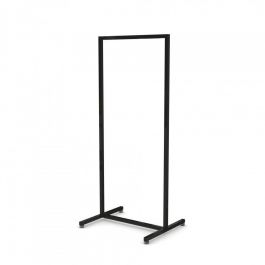
Categorical sizes usually range from 1X (similar to extra-large, but with slightly different proportions compared to the misses' size) up. Like misses' sizes, the sizes may be given as a dress size based on the bust measurement, but they are usually given as even-numbered sizes from 18 up.
#RAILS CLOTHING SIZE CHART PLUS#
Women's sizes or plus sizes For larger women of average height, sometimes with lower bust lines. Junior sizes are commonly given as odd-numbered sizes from 1 to 15, which correspond to the next number up in misses' sizes. Junior sizes For short women with higher busts and fairly straight bodies. Categorical sizes range from XS (extra-small) to XL (extra-large). Dress sizes may be given as girth at the bust in inches (e.g., 36), but even-numbered sizes from 2 to 16 are more common. For women of about average height (5'4") with an average bust height and an hourglass figure.

Misses sizes The most common size category. Variations include the height of the person's torso (known as back length), whether the bust, waist, and hips are straighter (characteristic of teenagers) or curvier (like many adult women), and whether the bust is higher or lower (characteristic of younger and older women, respectively). There are multiple size types, designed to fit somewhat different body shapes.
#RAILS CLOTHING SIZE CHART FULL#
These charts give an indication of size only and are by no means exact as they vary from manufacturer to manufacturer, sometimes by a full inch up and down. Women's sizes are divided into various types, depending on height. In 1995, ASTM International published its own voluntary standard, which has been revised since then ( Felsenthal 2012). The resulting commercial standard was not widely popular, and was declared voluntary in 1970 and withdrawn entirely in 1983. In 1958, the National Bureau of Standards invented a new sizing system, based on the hourglass figure and using only the bust size to create an arbitrary standard of sizes ranging from 8 to 38, with an indication for height (short, regular, and tall) and lower-body girth (plus or minus). The various combinations of height and girth resulted in nine sizes for each numerical upper-body measurement, which was highly impractical for manufacturing ( Felsenthal 2012).Īs a result, O'Brien and Shelton's work was rejected. Each size would be the combination of a single number, representing an upper body measurement, plus an indicator for height (short, regular, and long) and an indication for girth (slim, regular, and stout). After discovering the complex diversity of women's actual sizes, which produced five to seven body shapes, they proposed a three-part sizing system. Their team measured almost 15,000 women across the US. In the 1940s, the statisticians Ruth O'Brien and William Shelton received a Works Progress Administration grant to conduct the most ambitious effort to solve this problem.

This was a significant problem for mail-order companies, and several attempts at predictable, standard sizing were made ( Felsenthal 2012). A woman with an hourglass figure and a woman with an apple-shaped figure who have the same bust size will not have the same waist or hip sizes. The hourglass figure is frequently used as an industry standard, but only 8% of women have this body shape ( Felsenthal 2012). However, this proved unsuccessful because women's bodies have far more variety in shape. These were based on the chest measurement, with other measurements being assumed to be either proportional (the circumference of the neck, waist, hips, and thighs) or easily altered (length of the inseam) ( Felsenthal 2012).Īs this was largely successful in men, the same approach was attempted in the early 20th century for women using the bust as the sole measurement ( Felsenthal 2012). Men's standard sizes were probably developed first during the American Revolutionary War, and they were in regular use by the American army during the War of 1812 for ready-made uniforms ( Felsenthal 2012). ( October 2021) ( Learn how and when to remove this template message) Unsourced material may be challenged and removed. Please help improve this section by adding citations to reliable sources.


 0 kommentar(er)
0 kommentar(er)
